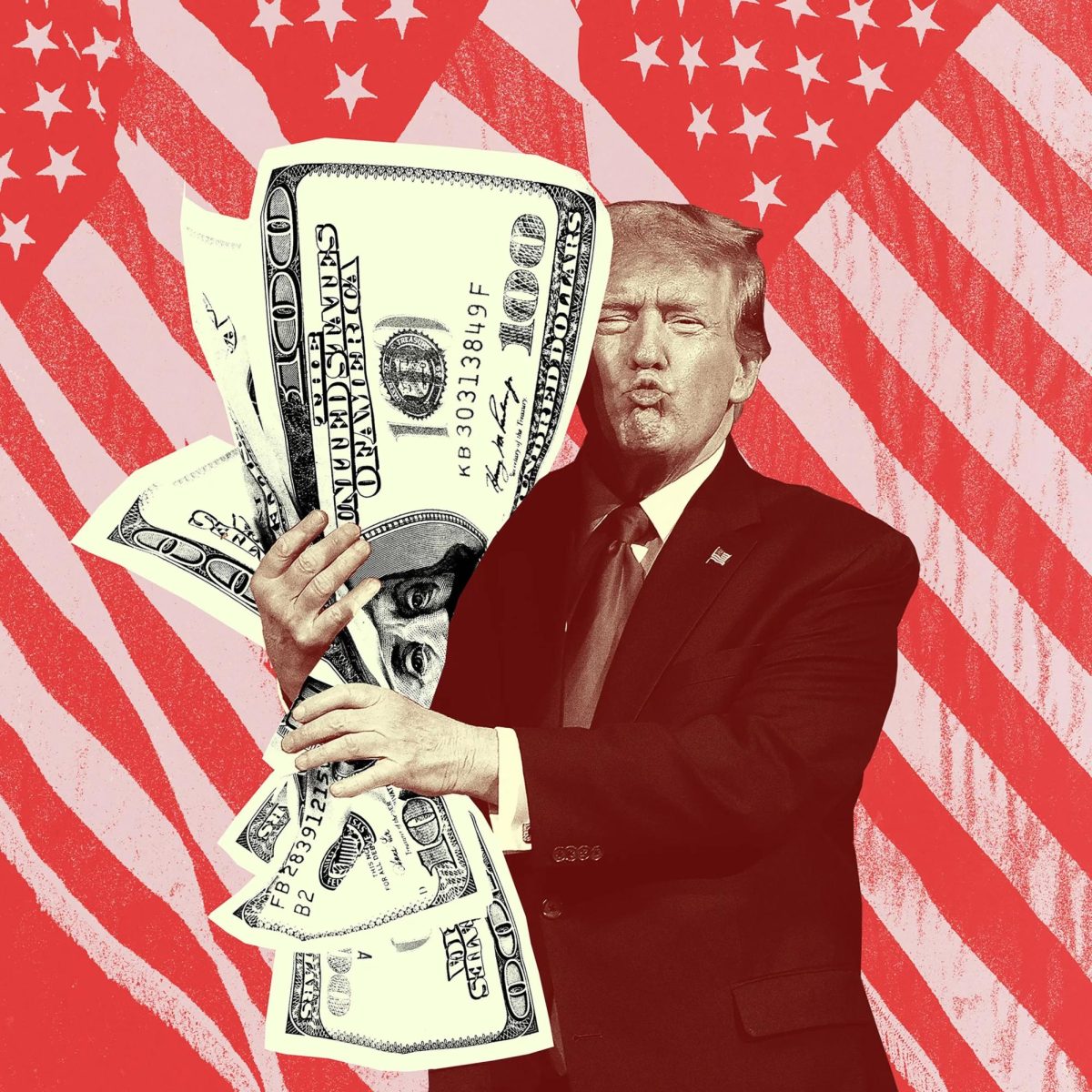The one thing American voters can unite on is the need for change with our economy; nobody wants to be paying $5 for a gallon of gasoline, or $10 for a carton of eggs. But at what point do these prices outweigh the quality of life for minorities in America? The harsh reality of Trump’s victory in the 2024 election is that voters prioritized economic growth over basic human rights. What’s even more unfortunate is that his economic policies will solely benefit the top one percent and everyone else will reap the repercussions. Biases aside, economists looking at past data and credible predictions claim that Trump’s upcoming economic policies are actually counterproductive. His confidence rapidly brainwashes the masses as he declares there will be tax breaks and inflation will be at an all time low, but looking at the facts proves that he genuinely does not know what he’s talking about.
One aspect of Trump’s economic plan is to impose a 10 percent tariff on all imports, and at least 60 percent on goods from China. Tariffs are taxes placed on imported goods by the government, meaning these goods become more expensive for buyers. The effects of this will worsen inflation because the price of imported goods will be higher. It is crucial to understand that these are all taxes that will be paid by the American people, NOT by the countries making these goods.
According to various sources such as the Center for American Progress (left-leaning), the American Action Forum (right-leaning), the Peterson Institute for National Economics, and The Tax Foundation, these tariffs could cost typical middle-class families anywhere between $1,253 and $4,000 per year, according to a report by CNBC.
His plan to lower corporate tax rates to 15 percent from the current 21 percent means that maybe for once, “trickle down economics” will prove to be true, but not in the way Republicans advertise it to be. The lack of taxes for the rich will trickle down to the middle and working classes, forcing us to fund Trump’s tariffs while we watch inflation rise by entire percentages and are the ones to pay the price–literally.
The overall aim of imposing tariffs is that it could encourage people to buy more American-made products, which would boost our economy. However, creating more goods in America also means creating more warehouses, factories, and assembly lines–all of which add up to be extremely expensive. Trump and his supporters argue that this would not worsen inflation because of the tax breaks he will allegedly implement for corporations. However, the only businesses that would benefit from these tax breaks would be those making at least $14 million annually, or the top one percent.
To sum it up, while tariffs might promote more American-made goods, the only businesses that will thrive will be the ones who are already making immense profits, not grassroots start-ups and small businesses.
Furthermore, the large majority of people who work in the production of American-made products are immigrants. Jobs surrounding aircraft structure, textile/garment pressing, agricultural work, and construction are dominated by immigrants–anywhere between 51-66% (New American Economy). It also is important to note that firms like Google, Zoom, and Duolingo are founded by immigrants. Not only do immigrants contribute extremely important labor contributions, but they also contribute to demands for goods and services. Because of this, it doesn’t make sense why Trump would pledge to carry out the “largest deportation effort in American history.” He claims that there is “no price tag” on these mass deportations, but ICE director Patrick Lechleitner disagrees.
Lechleitner told NBC News, “It’s not only putting [the immigrants] on planes and flying them, which is expensive, we got to have airplanes. We also have to deal with host nations. We have to get travel documents, we have to do all the logistics involved with that.”
Between the cost of deporting immigrants and the tens of millions of jobs that would be lost, the American economy will not benefit from the policies that Trump is planning to implement in the way he and his supporters think it will.
The main pillars of Trump’s economic plan are to impose blanket tariffs of 10-20% and 60% on Chinese-made goods, lower corporate tax rates to 15% which will benefit big businesses and billionaires, and deport millions of immigrants–the same people whose labor (and goods/services demands) is the backbone of America. Although economists don’t generally agree on much, most of them can agree that Trump’s policies will not result in lower inflation and economic growth for the US. Besides making everyday life more expensive for middle and working class Americans, what else does Trump have to offer?









